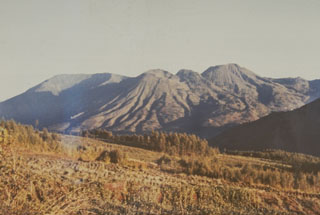Report on Dieng Volcanic Complex (Indonesia) — 1 January-7 January 2025
Smithsonian Institution / US Geological Survey
Weekly Volcanic Activity Report, 1 January-7 January 2025
Managing Editor: Sally Sennert.
Please cite this report as:
Global Volcanism Program, 2025. Report on Dieng Volcanic Complex (Indonesia) (Sennert, S, ed.). Weekly Volcanic Activity Report, 1 January-7 January 2025. Smithsonian Institution and US Geological Survey.
Dieng Volcanic Complex
Indonesia
7.2°S, 109.879°E; summit elev. 2565 m
All times are local (unless otherwise noted)
The Pusat Vulkanologi dan Mitigasi Bencana Geologi (PVMBG) reported that a phreatic eruption occurred from the E part of Sileri Crater in the Dieng Volcanic Complex on 18 December [Correction: on 6 January] and was not preceded by significant signs of elevated volcanic activity. The eruption began at 1058 and lasted for almost 57 seconds based on seismic data. Mud was ejected about 50 m N and NW, about 25 m W, and about 5 m S. A dense white plume rose 70 m above the water’s surface. During a post inspection of the crater scientists noted that volcanic gases remained at normal levels and white plumes rose 20-40 m above the water. The Alert Level remained at 2 (on a scale of 1-4). The public was warned to stay 500 m away from Sileri Crater and not to spend the night around the crater, to stay out of Timbang Crater and other potentially hazardous craters, and to take caution when digging in the ground as gasses could be released.
Geological Summary. The Dieng plateau in the highlands of central Java is renowned both for the variety of its volcanic scenery and as a sacred area housing Java's oldest Hindu temples, dating back to the 9th century CE. The Dieng Volcanic Complex consists of multiple stratovolcanoes and more than 20 small Pleistocene-to-Holocene craters and cones over a 6 x 14 km area. Prahu stratovolcano was truncated by a large Pleistocene caldera, which was subsequently filled by a series of cones, lava domes, and craters, many containing lakes. Lava flows cover much of the plateau, but observed activity has been restricted to minor phreatic eruptions. Gas emissions are a hazard at several craters and have caused fatalities. There are abundant thermal features and high heat flow across the area.
Source: Pusat Vulkanologi dan Mitigasi Bencana Geologi (PVMBG, also known as CVGHM)

